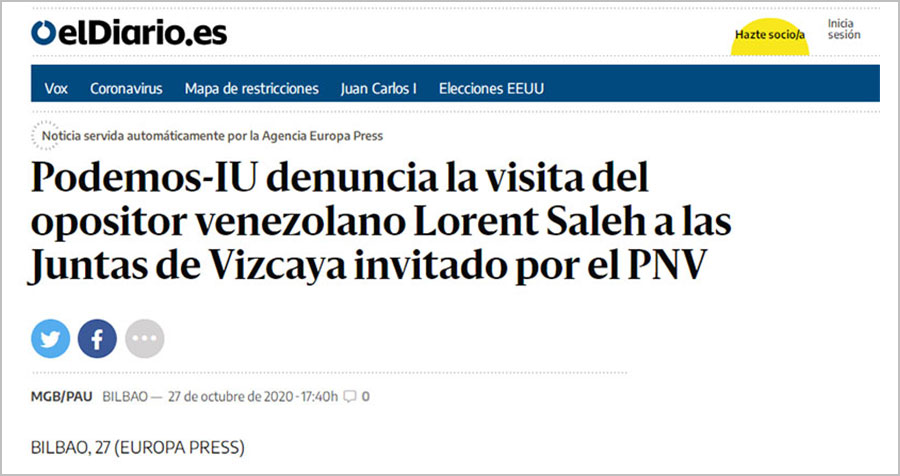Going into greater detail in some cases that stand out for their importance, seriousness or signification can be helpful to understand the complexity of the phenomenon of hate. This section selects cases by type of motivation.
MAMOUDOU BARRY, A GUINEAN-BORN RESEARCHER AT THE UNIVERISTY OF ROUEN, DIED FOLLOWING A RACIST ATTACK. FRANCE. On the night of 19 July 2019, Mamoudou Barry was in his car with his family in Rouen. The 31-year-old of Guinean origin had arrived in France seven years before to continue studying Law. He was married with a two-year-old daughter. The night of his death, a man shouted racist insults at him, Barry got out of the car to ask for an explanation and the man attacked him, leaving him unconscious. He died the next day. The attacker, a 29-year-old man, was arrested and sent to a psychiatric hospital.

Relatives and friends accompany Mamoudou Barry’s coffin in a ceremony in the Public University to honour his life
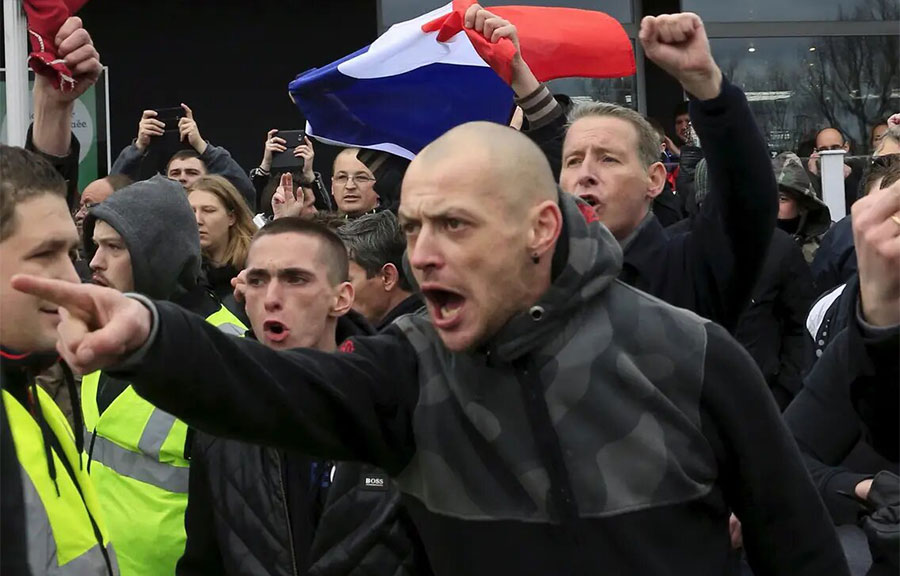
Gathering of extreme right supporters
WAVE OF ATTACKS FROM EXTREME RIGHT GROUPS AGAINST A REFUGEE CAMP NEAR CALAIS. FRANCE. In February 2016, a report by the NGO Care4Calais revealed attacks by extreme right groups against migrants in a refugee camp near Calais. These attacks included beating migrants, who were stripped naked, tied up and hit one by one.
WAVE OF ATTACKS FROM EXTREME RIGHT GROUPS AGAINST A REFUGEE CAMP NEAR CALAIS. FRANCE. In February 2016, a report by the NGO Care4Calais revealed attacks by extreme right groups against migrants in a refugee camp near Calais. These attacks included beating migrants, who were stripped naked, tied up and hit one by one.

Gathering of extreme right supporters
ATTACK ON THE ITALIAN ATHLETE OF NIGERIAN ORIGIN, DAISY OSAKUE. ITALY.In the early hours of 30 July 2018, a group of young people chased and attacked the 22-year-old Italian athlete, who was returning home in Turin. They threw eggs at her from a car, and one hit her in the eye, requiring an operation on her cornea. This attack was part of a wave of xenophobic.
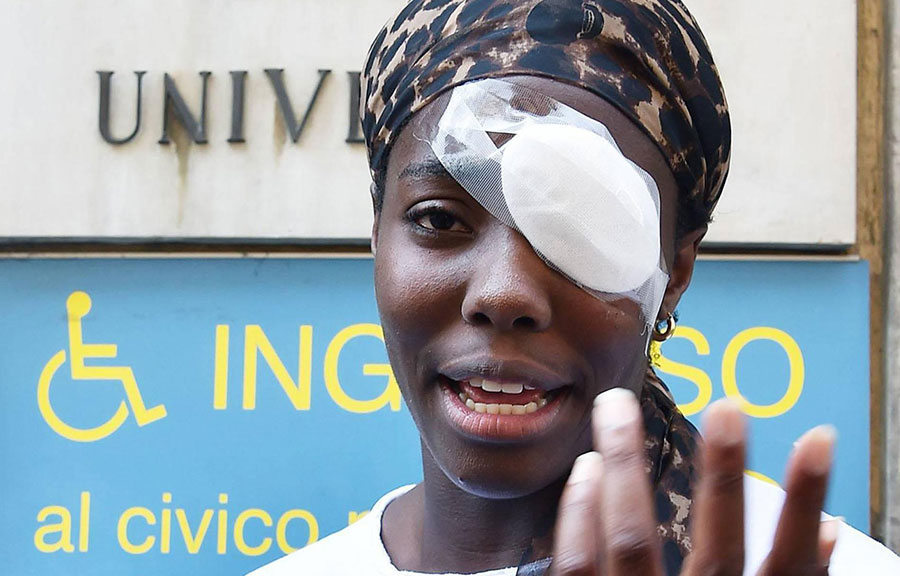
The Italian athlete Daisy Osauke, after suffering an attack when eggs were thrown at her
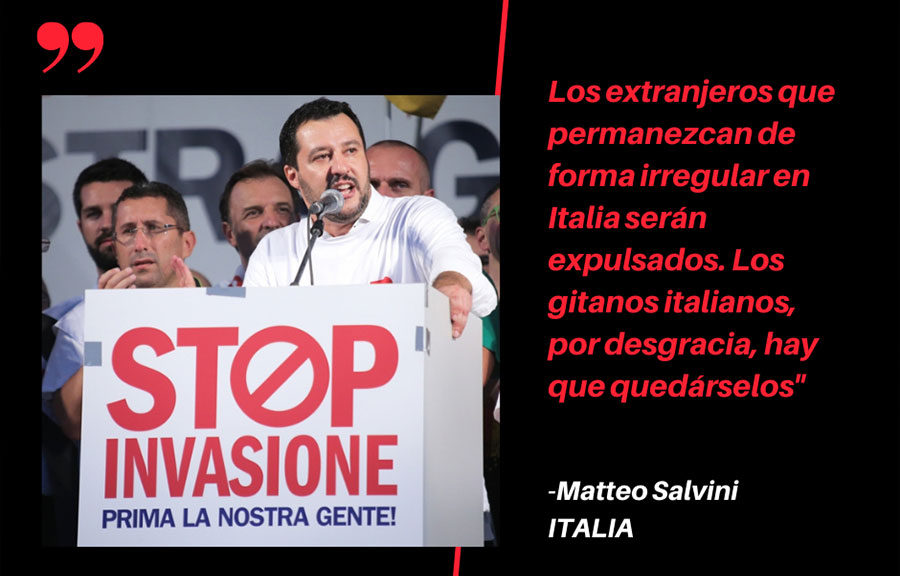
Speech by Matteo Salvini, leader of La Liga, in which he is seen wearing a T-shirt against immigration
MATEO SALVINI IDENTIFIES YOUNGSTERS OF TUNISIAN ORIGIN AS DRUG TRAFFICKERS, XENOPHOBIC STEREOTYPE. ITALY. Coinciding with the electoral campaign in the region of Emilia Romagna, Mateo Salvini knocked on the door of the home of a Tunisian family and jokingly asked if their son was involved in drug trafficking. The images of this intimidation appeared on Facebook, which later withdrew the video. A little later, Salvini was seen wearing a T-shirt against immigration in a political rally.
MATEO SALVINI IDENTIFIES YOUNGSTERS OF TUNISIAN ORIGIN AS DRUG TRAFFICKERS, XENOPHOBIC STEREOTYPE. ITALY. Coinciding with the electoral campaign in the region of Emilia Romagna, Mateo Salvini knocked on the door of the home of a Tunisian family and jokingly asked if their son was involved in drug trafficking. The images of this intimidation appeared on Facebook, which later withdrew the video. A little later, Salvini was seen wearing a T-shirt against immigration in a political rally.

Speech by Matteo Salvini, leader of La Liga, in which he is seen wearing a T-shirt against immigration
CASE: RACIST INSULTS AGAINST THE BRESCIA FOOTBALLER, ITALY. Mario Balotelli, the centre-forward of the Italian football club Brescia, was repeatedly subjected to racist insults and monkey chants in a match against Roma in November 2019. Balotelli was on the point of leaving the pitch but his team-mates convinced him to stay. On another occasion, Balotelli’s ex-partner Raffaella Fico and their daughter were subjected to racist insults. In December 2019, a new video was published showing Verona football club fans singing racist chants in a bar.

Footballer Mario Balotelli, the target of several episodes of racist insults
“The killer carries a camera, with which he recorded and broadcasted the attack”
ATTACK ON A SYNAGOGUE IN HALLE, IN THE REGION OF SAXONY. GERMANY. On 9 October 2019, a 27-year-old man dressed in military gear and wielding a rifle tried to force his way into a synagogue where there were about eighty worshippers. The attacker, Stephan Balliet, fired off shots and threw Molotov cocktails at the front door, but it remained closed and withstood the attack. Frustrated, he shot and killed a woman who was passing by and later attacked a nearby restaurant, also killing a person who was inside and injuring two other people.
Emulating Brenton Tarrant, the terrorist who attacked two mosques in Christchurch (New Zealand), Balliet was wearing a camera to record and broadcast the attack. Analysis of the content reveals a clear radical ideology; hate-filled anti-Semitic slogans and rhetoric denying the Holocaust feature constantly in the video. The terrorist did not choose any old day to carry out the attack: it was a special day for the Jewish community as they celebrated Yom Kippur.
After the attack, Balliet wrote a manifesto that he then sent to an internet forum explaining his ideology. In the document, he denounced the existence of a Zionist government and claimed that: “it does not matter if I fail or die, but if I have managed to kill a single Jew it will have been worth it”. The attack caused a great stir in Germany, as it increased concern about the rise of radicalised individuals from the extreme right, people who were prepared to take a step beyond activism and become terrorists for the cause.

Two people were killed in the anti-Semitic attack on a synagogue in Saxony
ATTACK BY THE FAR RIGHT IN HANAU (GERMANY), LEADING TO THE DEATHS OF TEN PEOPLE IN MARCH 2020. GERMANY. The double attack, which shook the country, was committed by a far-right extremist targeting places regularly frequented by the Kurdish community. The attacker first fired on a “shisha bar” and then went to another one in a different part of the city. The two attacks left 10 people dead and 5 injured. The terrorist was found dead in his home next to his mother’s body, whom he must have shot before committing suicide. The ideology of Tobías R. -a 43-year-old man- was revealed in a written statement he left be
The ideology of Tobías R. -a 43-year-old man- was revealed in a written statement he left before carrying out the attack. It consisted of twenty-four pages, in which he expressed his obsession with conspiracy theories and his deep hatred for foreigners and people generally not of Caucasian origin. His words were a call for supremacism: he talked about the superiority of some races and the need to wipe out countries from North Africa, the Middle East and Central Asia.
“It does not matter if I fail or die, but if I have managed to kill a single Jew it will have been worth it”

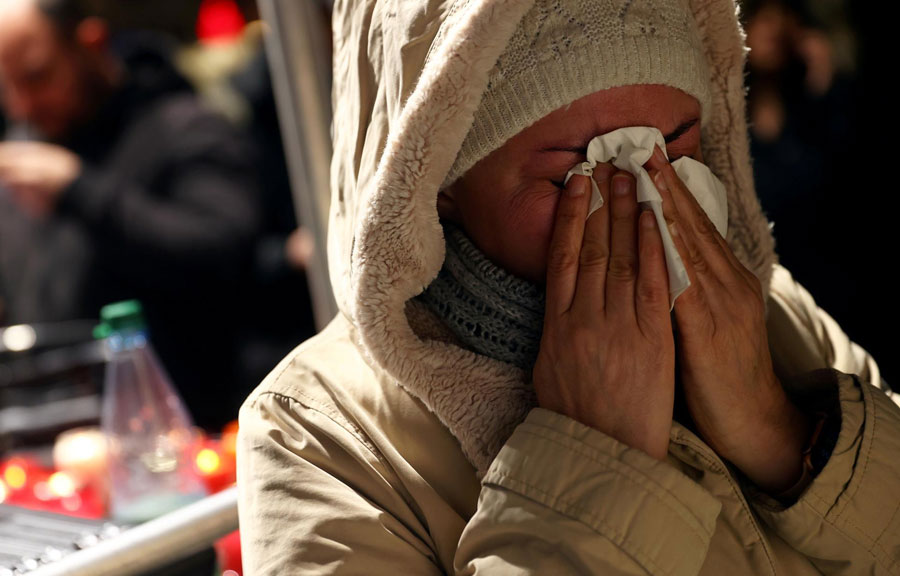
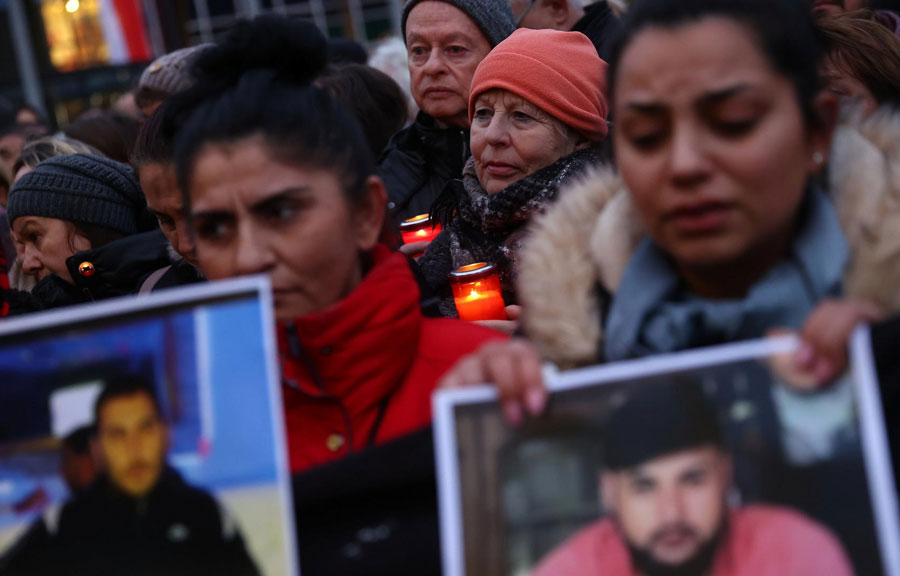
Images of the extreme right attack in Hannau (Germany) and protests against it
In Germany, there would be 12,700 extreme right supporters willing to commit violent acts
A few days before the attack in Hanau, twelve individuals were arrested who had been planning a series of attacks on mosques in up to twelve different places in Germany. The spokesman for the German Interior Ministry stated that “what has come to light with these arrests is terrible; it reflects how quickly radicalisation can take place in extreme right circles”.
The rise of the phenomenon is clear. Data from the Federal Protection Office indicate that there are around 12,700 extreme right supporters willing to commit violent acts, and as the head of the FPO (Thomas Haldenwang) underlined, it is very difficult to watch them all the time.
PUBLIC WELCOME FOR TERRORISTS IN ANDOAIN, MARCH 2018. SPAIN. On 18 March 2018, more than two hundred people attended the ‘welcome home ceremony’ for the ETA terrorists Iñaki Igerategi and Ignacio Otaño in the town of Andoain. They had just completed a six-year sentence for belonging to ETA and passing detailed information to the leaders of ETA on, among other things, Joseba Pagazaurtundua, the Chief of the Local Police in Andoain who was murdered by ETA in February 2003.
These tributes to ETA terrorists are not exceptional; they are the rule that marks a democratic anomaly. Every “ongi etorri” (welcome home gathering) represents humiliation for the victims of terrorism, a sly form of glorification of terrorism, and, of course, a secondary victimisation that does not allow the victims’ wounds to heal. This democratic anomaly means that in certain places in the Basque Country and Navarre, it is quite normal to pay tribute to, or perform ceremonial dances in honour of members of ETA. We should say that this kind of act is only organised for terrorists who remained loyal to ETA, i.e. have complied with the ‘law of silence’ and have not crumbled or cooperated with the judiciary system to shed light on some of the hundreds of murders that remain unresolved.
In a European Union that strives to apply plans to prevent violent radicalisation, it is hard to believe that there is an ‘oasis’ in which ceremonies of glorification of terrorism are organised systematically, with children and adolescents present. Exposing children to a continued narrative of glorification of evil like this creates a dangerous breeding ground for violence.

A COUNCILLOR FROM THE CUIDADANOS POLITICAL PARTY WAS ATTACKED AND HAD HIS NOSE BROKEN AFTER BEING MOBBED BY ULTRANATIONALISTS IN TORROELLA DE MONTGRÍ (CATALONIA). SPAIN. On 21 April 2019, violent and intolerant groups mobbed members of the Ciudadanos political party during a campaign event in the Catalan town of Torroella de Montgrí. They got together to insult and threat, shouting slogans such as “Fascists out”, “trouble-makers” or “go home, you whore” in an attempt to expel the constitutionalist party from the area, as well as dissuading other people who might have been interested in attending the rally. In the same town (Torroella de Montgrí, Gerona), Councillor Sergio Atalaya was struck by a can of beer thrown during a visit by members of parliament and councillors of Ciudadanos; the blow broke his nose. Hundreds of people had been called on by pro-independence associations to boycott the visit of the members of Ciudadanos. Previously, the Town Council had rejected, for no apparent reason, an application by Ciudadanos to put up an information marquee. As a result, it was decided to replace the marquee with a walk through the town in support of the members and supporters of the party there.
The mob shouted threats and even told Mr Atalaya to leave the area; he was born in Blanes (Gerona) and was a councillor there. The spiral of hate reached its peak when a regional parliamentarian of Ciudadanos presented a motion in the Catalan Parliament condemning the attack on Mr Atalaya; the response of Junts per Catalunya (JxCAT), ERC and CUP was to add their votes to those of Catalunya en Comú-Podem to reject the motion.
“Fascists out”, “trouble-makers” or “go home, you whore” were among the slogans shouted at members of a constitutionalist political party
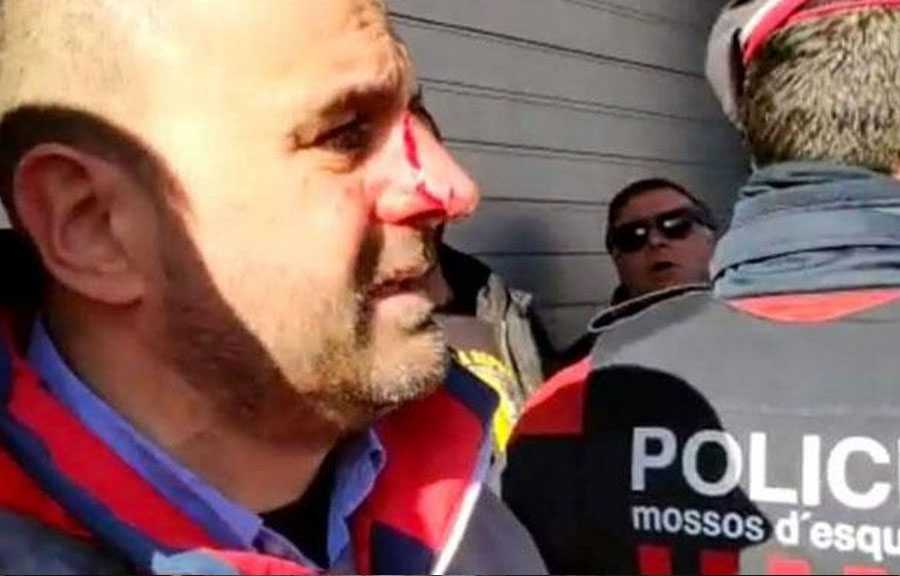
Image of the attack on Sergio Atalaya, a Ciudadanos councillor in Torroella de Montgrí (Girona)
HARASSMENT AND INSULTS AIMED AT LORENT SALEH. SPAIN. Saleh became a human rights activist at the age of 20. He was imprisoned for four years by Hugo Chaves’ regime in Venezuela, during which time he suffered torture, until the regime accepted that he could be transferred to Spain. He spent half his sentence in ‘La Tumba’, a torture centre located five floors underground in a building in the centre of Caracas called Plaza Venezuela, the seat of the ‘Servicio Bolivariano de Inteligencia Nacional’. This is a laboratory set up to apply a very particular type of psychological torture, for example, keeping the prisoner sitting for days with their hands tied behind their back, with sensorial deprivation, and no contact with other people at all.
In Spain, after receiving the Sakharov Prize, Mr Saleh was attacked on social media and received insults and boycott attempts when presenting his documentary ‘Torture26’, which seeks to denounce torture in the 21st century. Ultra-nationalist entities such as the Fundación Pakito Arriaran, the trade union LAB or Ernai (radical Left youth) organised demonstrations against the activist’s presence in the Basque Country. Ultra-nationalist formations of the ethno-nationalist left and others of the extreme left extended the shock wave of intolerance and hate to the city of Burgos, where the police had to deploy to ensure that the rally could take place. Despite this, they could not stop one person from approaching Saleh and shouting “You are a Nazi” at him.
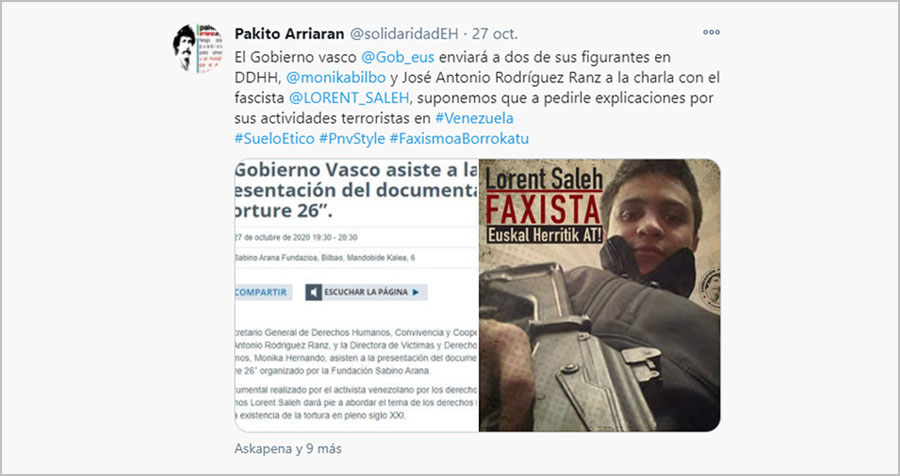
Campaign on Twitter against the Venezuelan dissident Lorent Saleh
